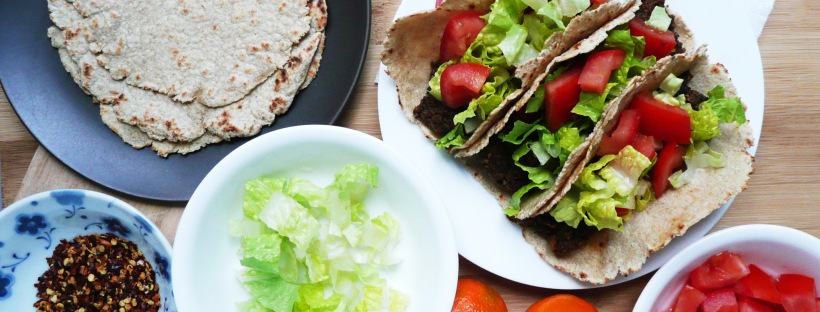I love tuna salad, and this is a slightly fancier version but is still super simple to make. It's perfect for a quick dinner, and you can use up your leftover brown rice or salmon to make this tasty dish.
Tag: Gluten Free
Good Morning Sunshine Smoothie – (Strawberry, Apple, Pineapple) – Easy, Vegan, Dairy Free, Delicious
This super pretty strawberry and pineapple smoothie looks like sunshine in a cup. It's a snap to make and is not only delicious, but also full of healthy and anti-inflammatory ingredients.
What To Do With Leftover Lemons – How To Freeze Lemons
How to make the most of your excess lemons. Easy trick to always have lemon juice and zest on hand when you need it.
Quinoa Tabbouleh – Easy, Gluten-Free, Vegan, Delicious
A simple, healthy, and delicious way to use up leftover quinoa. Great to make ahead for easy lunches.
Nian Gao (Chinese New Year Cake with Red Bean Paste) – Dairy Free, Refined Sugar Free
A super simple recipe for dairy free and refined sugar free nian gao (Chinese New Year Cake) with homemade red bean filling. Tastes just like the traditional version.
Lunar New Year – Homemade Tang Yuan Recipe – Refined Sugar Free
These tang yuan are chewy sweet rice balls with delicious red bean filling. Tang yuan signify family togetherness and are eaten during Lunar New Year celebrations.
Lunar New Year – Red Bean Soup Recipe, Refined Sugar Free, Maple Syrup
A refined sugar free version of a classic sweet red bean soup.
Gluten Free Oat Flour Tortilla Recipe – Super Easy, Cheap and Cheerful, Vegan Friendly
Nothing says "I love you" quite like a taco (and everyone loves tacos). So this Valentine's Day, make your loved one some amazing tacos with these gluten free oat flour tortillas.
Kitchen Tip – How to Regrow Green Onions
A simple, thrifty, and easy way to regrown green onions.
How to Store Fresh Herbs
Quick tip for keeping herbs fresh, and a few suggestions for easy ways to use up extra herbs in a hurry.









